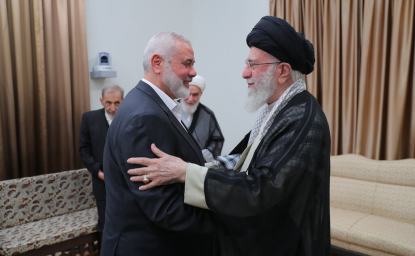The U.S.-led coalition began bombing the Islamic State – also known as ISIS, ISIL, or Daesh – after the group seized large swaths of territory in Iraq and Syria in mid-2014. A dozen nations have been involved in airstrikes, although the United States has carried out more than seventy percent. The number of airstrikes increased throughout 2015, helping local forces regain control of strategic areas: In Syria, a Kurdish militia retook Kobani. In Iraq, Iraqi and Kurdish forces recaptured Ramadi, Sinjar, Baiji, and Tikrit. In 2016, the U.S. coalition increasingly targeted the areas around Raqqa, the ISIS capital in Syria, and Mosul, its stronghold in Iraq. By April 2016, the coalition had conducted more than 11,000 airstrikes, forcing ISIS to retreat from 40 percent of its territory in Iraq and 10 percent of its territory in Syria.
Pentagon officials emphasize that airstrikes alone will not defeat the Islamic State. The White House has refrained from deploying large numbers of ground troops, instead focusing on training, equipping and advising local forces. In 2014, the Pentagon launched a program aimed at training thousands of Syrian rebels. But by October 2015, the program was shut down after fielding only 150 fighters. The program was revamped and relaunched in April 2016. The Syrian Democratic Forces (SDF), a joint Kurdish-Arab militia, was among the vetted opposition groups that received U.S. support. The SDF was primarily led by commanders from the Kurdish People’s Protection Units (YPG), which played a major role in the defeat of ISIS in Kobani. In November 2016, the U.S.-backed SDF launched an offensive to capture the ISIS capital of Raqqa.
Backed by U.S.-led coalition airpower, Iraqi security forces retook Mosul in July 2017, and the SDF captured Raqqa in October 2017. Both cities fell after bloody, months-long battles. In December 2017, Iraqi Prime Minister Haider al Abadi declared victory over ISIS in Iraq. The U.S. ground presence in Iraq and Syria grew over this period, eventually reaching 2,000 advisors and support troops. Secretary of Defense James Mattis said that the U.S. military would fight the Islamic State in Syria “as long as they want to fight,” and that the U.S. military’s long-term objective in Syria was to prevent the return of an “ISIS 2.0.”
In January 2019, the SDF advanced on the remaining handful of villages occupied by ISIS. In February 2019, the SDF besieged ISIS in the village of Baghouz, the jihadist group’s last territorial enclave. Baghouz fell on March 23, 2019, ending ISIS’ physical caliphate in Iraq and Syria.
Several challenges remained after ISIS’s territorial defeat. On February 22, 2019, U.S. officials stated that 400 U.S. troops would remain in Syria, partially reversing President Trump’s signaled withdrawal. Several thousand ISIS fighters surrendered to the SDF during its 2018-2019 offensive, including over 800 foreign fighters and 4,000 of their family members. Nations around the world faced the complex task of repatriating those surrendered militants and putting them on trial. Iraq and Syria were both devastated by war and had millions of internally-displaced people living in camps. And ISIS remained active as an insurgent force with the potential to regain strength. Shortly before the fall of Baghouz, General Joseph Votel, the outgoing commander of U.S. Central Command, warned Congress that ISIS made a “calculated decision to preserve the safety of their families and preservation of their capabilities by taking their chances in camps for internally displaced persons, and going to ground in remote areas and waiting for the right time to resurge.” The following is a timeline of U.S. actions against ISIS since 2014.
2014
August 9: The U.S.-led coalition begins airstrikes on ISIS targets in Iraq.
September 17: The House of Representatives votes to give the U.S. military authority to train and arm Syrian rebels, with a vote of 273-156.
September 22: The U.S.-led coalition begins airstrikes on ISIS targets in Syria.
September 25: Pentagon Press Secretary Rear Adm. John Kirby predicts that ISIS will adapt to U.S. airstrikes and that the United States will need “competent partners” on the ground to combat the Islamic State. He also emphasizes the need to “limit civilian casualties or collateral damage as much as possible.”
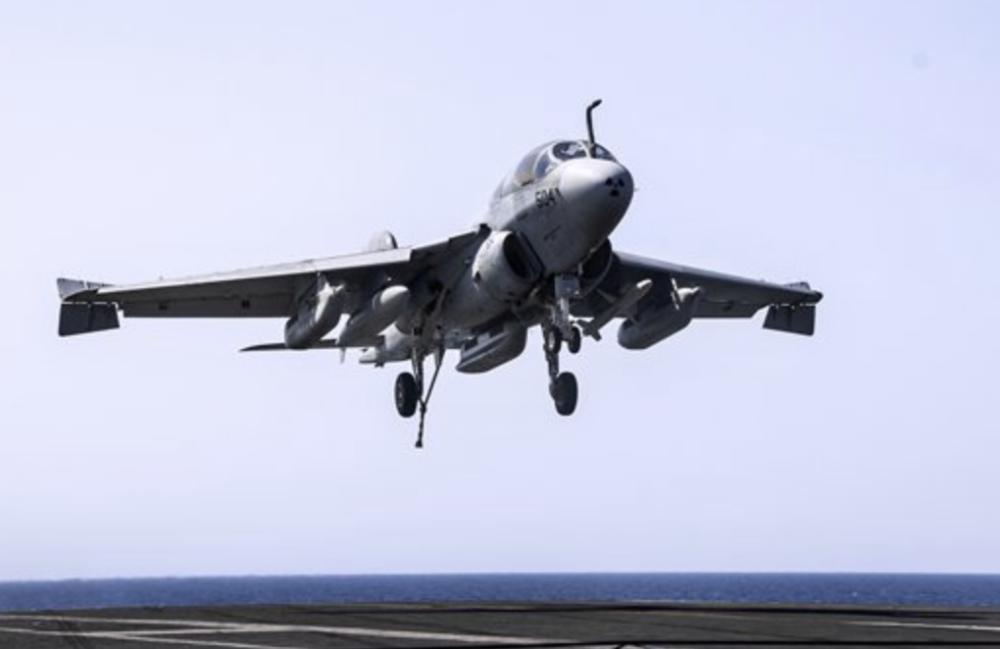
An EA-6B Prowler lands aboard an aircraft carrier after conducting airstrikes on ISIS targets on Sept. 23, 2014
October 7: The cost of U.S. military operations against ISIS reaches $1.1 billion.
October 15: The Pentagon designates the campaign against ISIS “Operation Inherent Resolve.”
November 4: Pentagon officials announce that they are working towards establishing a program to train and equip moderate Syrian opposition forces.
2015
January 22: U.S. officials estimate that U.S. and coalition airstrikes have killed around 6,000 ISIS fighters.
January 26: Kurdish fighters, with the help of U.S. and coalition airstrikes, drive out ISIS militants from the Syrian border town of Kobani after a four-month battle.
January: The Pentagon begins investigating allegations of civilian casualties caused by U.S. airstrikes.
February: The White House steps up efforts counter extremist messaging on social media, working with the private sector and civil society groups. It also announces plans to designate a special envoy to focus on countering ISIS messaging.
March 3: U.S. officials estimate that U.S. and coalition airstrikes have killed around 8,500 ISIS fighters.
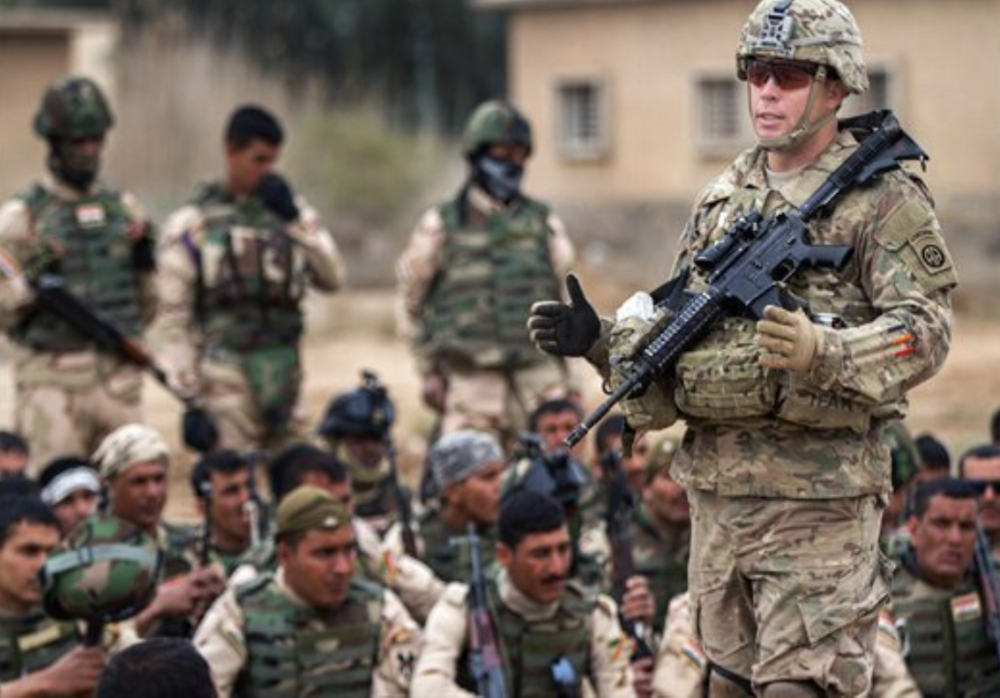
A U.S. soldier trains Iraqi soldiers at Camp Taji, Iraq on March 24, 2015.
April 1: Iraqi forces seize Tikrit from ISIS.
June 5: The Pentagon acknowledges that around 75 percent of aircraft return from missions without dropping bombs, in part because of difficulties isolating targets and the risk of civilian casualties.
June 7: Iraqi forces seize Baiji from ISIS.
June 13: A U.S. airstrike hits a gathering of al Qaeda members in Ajdabiya, Libya, targeting al Qaeda leader Mokhtar Belmokhtar. It is the first U.S. strike in Libya since 2011.
June 16: Kurdish forces seize the border town of Tal Abyad from ISIS, depriving the group of a key supply route.
June 18: The cost of U.S. military operations against ISIS reaches $2.91 billion.
October 9: The Pentagon’s program to train Syrian rebels – which cost $500 million annually – was shut down after fielding only 150 rebels. The goal had been to train 3,000 fighters by December 2015.
October 22: A U.S. soldier is killed during a rescue mission at an ISIS-controlled prison in northern Iraq. He is the first American soldier killed in action in Iraq since military operations resumed in 2014.
October 30: The White House announces that up to 50 special operations forces would be deployed to northern Syria to assist opposition forces. White House Press Secretary Josh Earnest denies that the deployments signal a shift in strategy, emphasizing that “These forces do not have a combat mission.”
November 7: Defense Secretary Ash Carter says that the United States needs “much more than airstrikes” to defeat ISIS, including successfully training local forces so that gains against ISIS are sustainable.
November 13: Kurdish forces capture Sinjar from ISIS in Iraq, and U.S.-backed rebels seize al Hawl from ISIS in Syria. A U.S. airstrike hits an ISIS base in Derna, Libya. Military officials believe the strike killed Abu Nabil, a former al Qaeda operative and a top ISIS leader in Libya.
December 1: Defense Secretary Ash Carter announces that a “specialized expeditionary targeting force” of around 200 troops would be sent to Iraq.
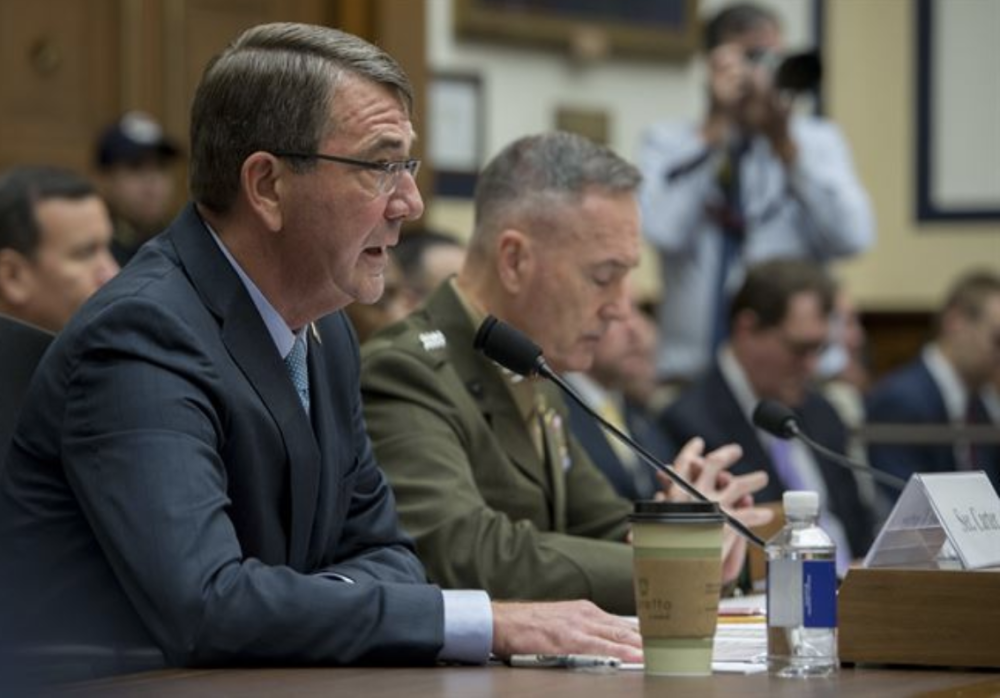
Carter testifies before the House Armed Services Committee on Dec. 1, 2015
December 26: U.S.-backed rebels seize the Tishreen Dam from ISIS in Syria.
December 27: Iraqi forces seize Ramadi from ISIS in Iraq.
2016
January 8: The Department of Justice and Department of Homeland Security introduce a new task force to counter violent extremism. The State Department also establishes a new center to undermine extremist messaging.
January 21: Defense Secretary Ash Carter outlines three goals in the U.S. and coalition military plan against ISIS: target its strongholds in Raqqa and Mosul, combat emerging ISIS affiliates worldwide, and protect other nations from ISIS attacks.
February 17: U.S. officials estimate that airstrikes have killed at least 26,000 ISIS fighters.
February 19: U.S. airstrikes hit an ISIS training camp in Sabratha, Libya, killing at least 49 people. U.S. and British special forces were deployed to Libya in the preceding weeks, supported by drones and warplanes. But the Obama administration reportedly declined requests from U.S. military officials to attack ISIS’s stronghold in Sirte, Libya, preferring to focus on occasional strikes against high-profile ISIS leaders.
February 22: U.S. special operations forces help Syrian rebels retake the town of al Shaddadi from ISIS.
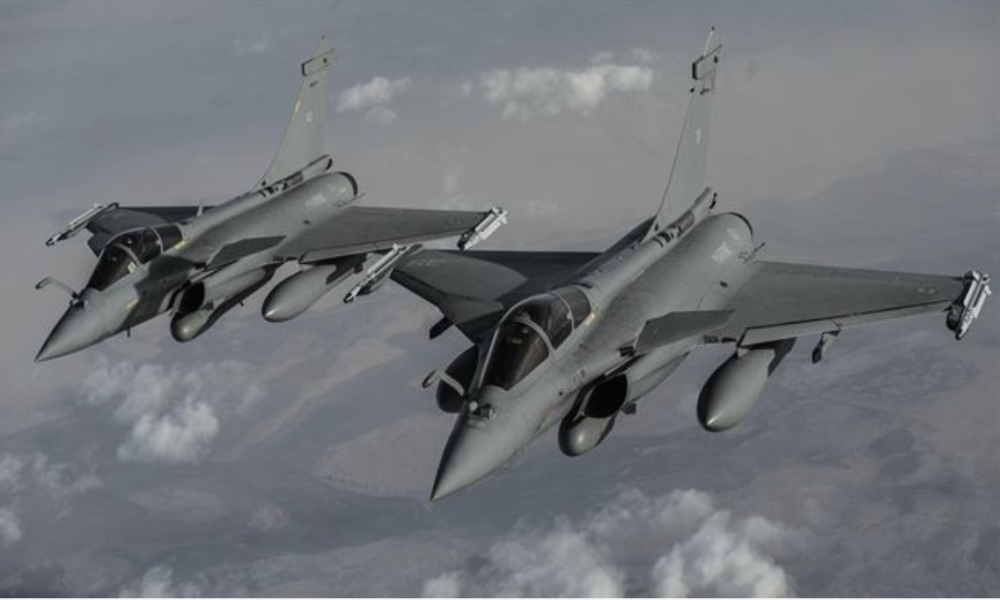
Two French F-2 Rafales aircraft fly over Iraq in support of Operation Inherent Resolve on Jan. 8, 2016
March: A State Department Inspector General report finds that one third of Iraqis believe the United States is supporting ISIS, and around 40 percent believe the United States is trying to destabilize Iraq.
March 17: Secretary of State John Kerry labels ISIS abuses as genocide. "We must recognize what Daesh [ISIS] is doing to its victims," he says.
March 19: A U.S. Marine is killed by an ISIS rocket attack at a base in Makhmur, in northern Iraq.
March 25: Defense Secretary Ash Carter and Chairman of the Joint Chiefs of Staff Joe Dunford claim that the momentum in Iraq and Syria has shifted to coalition forces. Carter announces that he believes the U.S. military killed Haji Imam, ISIS’s second-in-command.
April 1: Military spokesman Col. Steve Warren announces that the United States is training “dozens” of Syrian rebels to fight ISIS, in a revival of the training program that ended in October 2015.
April 5: Secretary of State John Kerry states that the United States “is definitively at war with ISIS.” Secretary Carter announces that the Defense Department’s Cyber Command has been brought into the efforts to counter ISIS.
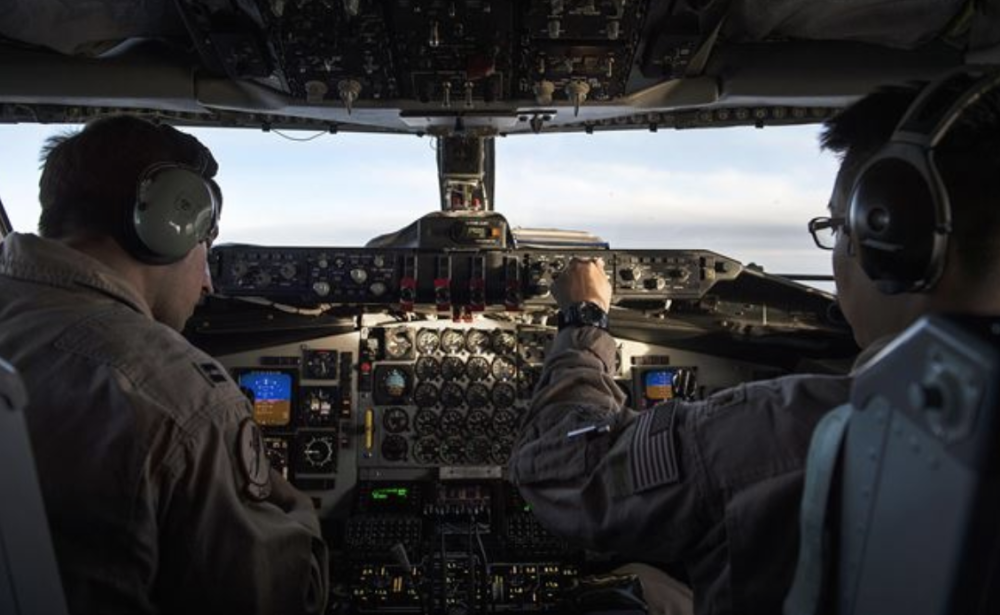
Air Force pilots fly a KC-135 Stratotanker aircraft over Iraq on April 6, 2016.
April 12: Deputy Defense Secretary Bob Work says that ISIS is under “enormous pressure” and that “Every time we have gone after one of their defended positions in the last 10 months, we have defeated them. They have left. They have retreated.”
April: The CIA prepares a “Plan B” to supply more weapons to Syrian rebels after signs that the six-week-old ceasefire was beginning to collapse. The CIA began a covert program to supply small arms and ammunition to Syrian rebels in 2013.
April 11: The U.S.-led coalition launches a website, inherentresolve.mil, intended to boost online messaging efforts.
April 13: The Pentagon announces that the fight against ISIS has moved into a second phase. According to military spokesman Col. Steve Warren, “we believe that by degrading them in phase one and then dismantling them in phase two, we believe that that will set up phase three, which, of course, is the ultimate defeat of the enemy.” Phase two centers on retaking the key ISIS strongholds of Mosul and Raqqa.
April 13: The U.S.-led coalition arms Kurdish forces with heavy weapons to boost fighting capabilities against ISIS.
April 15: The U.S. military deploys tactical aircraft capable of attacking ISIS’s communications systems.
April 20: U.S. military officials acknowledge that authority for airstrikes has been delegated from U.S. Central Command (CENTCOM) to commanders on the ground. The change could allow airstrikes to hit targets more quickly, without waiting for higher approval, but also risks greater civilian casualties.
April 20: President Obama authorizes the deployment of 217 additional troops to Iraq. The United States also plans to dispatch Apache helicopters to Iraqi forces and pay $415 million in salaries for Kurdish troops.
April 20: The Air Force deploys B-52 bombers to carry out airstrikes. It is the first combat deployment of that type of aircraft in Iraq since 1991.
April 22: The U.S. military acknowledges that U.S. airstrikes killed 20 civilians and injured 11 others between September 2015 and February 2016.
April 25: President Obama announces plans to deploy 250 special operations forces to Syria. He emphasizes that their role is to support local forces and that they are “not going to be leading the fight on the ground.”
ICYMI: #CJTFOIR update: 20.2K ISF trained; 4.7K in training at 6 sites in #Iraq #NotoDaesh #InherentResolve pic.twitter.com/czjkrQcP5E
— Inherent Resolve (@CJTFOIR) April 27, 2016
May 2: A U.S. service member is killed in northern Iraq, becoming the third U.S. casualty since March 2015.
May 5: ISIS captures the Shaer gas field near Palmyra.
May 19: Iraqi forces retake the western town of Rutbah. “Although a small town, Rutbah has outsized strategic value” due to its location on the main route between Amman and Baghdad, according to Operation Inherent Resolve spokesman Col Steve Warren.
May 23: Iraqi forces, aided by U.S. and coalition airstrikes, advance on Fallujah, which ISIS has held since 2014.
May 24: Kurdish forces backed by U.S. airstrikes launch an offensive on territory north of Raqqa, Syria.
June 10: Special Presidential Envoy for the Global Coalition to Counter ISIL Brett McGurk said in a briefing that airstrikes had helped local forces capture 10,000 square kilometers in Syria and 30,000 square kilometers in Iraq from ISIS. He added that ISIS had been forced to cut oil production by one third since late 2015, and fighters' salaries had been reduced by half.
June 26: The Iraqi army retakes Fallujah from ISIS.
July 19: U.S.-backed rebels in Syria capture an ISIS base in Manbij, according to the U.S. military.
Aug. 7: ISIS suicide bombers attack a U.S.-backed Syrian rebel base near the Syria-Iraq al Tanf border crossing. Sever people are killed.
Aug. 12: U.S.-backed forces in Syria take full control of the northern town of Manbij from the Islamic State.
Aug. 30: ISIS says its spokesman and one of its longest-serving leaders, Abu Muhammad al Adnani, was killed in a U.S. airstrike while traveling in Syria near al Bab.
Sept. 17-18: A man stabs nine people at the Crossroads Center mall in St. Cloud, Minnesota before being shot and killed. The Islamic State claims responsibility for the attack.
Oct. 10: A new report by terrorism researchers at West Point says ISIS media output had dropped drastically, from 700 items from official outlets in August 2015 to under 200 in August 2016.
Oct. 16: Iraq launches a U.S.-backed campaign to liberate Mosul from the Islamic State.
Oct. 15-Oct. 17: The U.S. conducts more than 30 airstrikes against ISIS in Sirte, backing pro-government forces in the battle to push into the ISIS’s last stronghold in Libya.
Oct. 22: Iraqi forces retake Qaraqosh, a Christian area southeast of Mosul, which had been under ISIS rule since 2014.
Oct. 27-29: A man attacks and injures a Kenyan police officer with a knife outside the U.S. Embassy in Nairobi. The attacker is shot and killed. The Islamic State claims responsibility for the attack.
Nov. 6: U.S.-backed Syrian Democratic Forces start a new operation to isolate and ultimately retake Raqqa from the Islamic State.
Nov. 7: The Pentagon says it is ready to resume airstrikes against the Islamic State militants in Sirte if requested by the GNA.
Nov. 15: An Iraqi interior ministry spokesman says Iraqi forces have removed the Islamic State from one third of eastern Mosul.
Nov. 24: A U.S. Navy sailor is killed by an improvised explosive device (IED) in northern Syria.
Dec. 1: The Islamic State tells its members to stop using messaging apps like WhatsApp and Telegram, as they suspect the U.S.-led coalition is using the apps to track and kill ISIS leaders.
Dec. 6: Libyan forces declare victory over the Islamic State in Sirte, after driving ISIS from its last district with the help of U.S. airstrikes.
Dec. 8: A senior U.S. military official says around 50,000 ISIS fighters have been killed since the U.S. began battling the group two years ago.
Dec. 29: Iraqi security forces launch the second phase of their Mosul campaign against the Islamic State.
Abu Jandal al Kuwaiti, a senior commander for the Islamic State and a member of its war committee, was killed in a U.S.-led coalition airstrike near the Tabqa Dam in Syria, according to the coalition spokesman.
2017
Jan. 5: Iraqi forces have recaptured around 70 percent of eastern Mosul from the Islamic State, according to an Iraqi general.
Jan. 19: U.S. airstrikes kill at least 80 ISIS militants in camps outside of the group’s former stronghold in Sirte, Libya.
Jan. 23-24: Iraqi officials say government forces have taken complete control over eastern Mosul from the Islamic State, 100 days after the start of the campaign. Iraqi forces are preparing an offensive to capture western Mosul from ISIS, according to an Iraqi commander.
Jan. 30: An Arizona man is found guilty of providing support to the Islamic State by helping a New York City college student travel to Syria, where he was killed fighting for ISIS.
Feb. 9: A New York City man pleads guilty to attempting to provide support to the Islamic State and trying to kill an FBI agent with a knife.
Feb. 10: Security officials say the Islamic State in Libya has shifted to desert valleys southeast of Tripoli, after its defeat in its stronghold of Sirte.
Feb. 19: U.S.-backed Iraqi forces launch a ground offensive against the Islamic State in the western part of Mosul.
Feb. 23: U.S.-backed Iraqi forces capture Mosul airport from the Islamic State.
Feb. 24: The Iraqi air force strikes ISIS targets inside of Syria for the first time after coordinating with Damascus, Prime Minister Haider al Abadi says. The U.S. provided intelligence for the airstrike, according to the Pentagon.
Feb. 28: ISIS militants are being killed by the U.S.-led coalition at a rate that they can’t sustain, according to a British Major General Rupert Jones. “The enemy cannot sustain the attrition that they are suffering and therefore they lose terrain, they lose battles,” the general says.
March 1: U.S.-backed Iraqi forces take control of the last major road out of western Mosul from the Islamic State.
March 6: Iraqi forces recapture the main government building in Mosul, the central bank and the Mosul museum from the Islamic State.
March 8: U.S. and Iraqi officials suspect that Abu Bakr al Baghdadi has left the battle for Mosul to field commanders and is now hiding in the desert.
March 16: Iraqi government forces besiege ISIS fighters in Mosul’s Old City.
March 26: U.S.-backed Syrian Democratic Forces retake a military air base in northern Syria from the Islamic State.
April 2: U.S.-backed Syrian forces fend off an ISIS counterattack near the Tabqa dam in Syria.
April 4: Two Florida men plead guilty to conspiring to give material support to ISIS after planning to travel to Syria to join the Islamic State.
April 6: The Islamic State says Ahmad Abousamra, a U.S.-Syrian fighter and propagandist, was killed in Syria in January. Abousamra helped set up the ISIS magazine Dabiq.
April 11: U.S.-backed Syrian Democratic Forces advance to within a mile of the Islamic State’s capital of Raqqa.
April 13: The United States drops “the mother of all bombs,” its largest non-nuclear weapon, targeting caves and tunnels being used by the Islamic State in Afghanistan. The bomb kills at least 36 suspected ISIS fighters.
April 21: Abdurakhmon Uzbeki, an ISIS militant who was a close associate of caliph Abu Bakr al Baghdadi and was linked to the January night club attack in Turkey, is killed in a ground attack near Mayadin, Syria, according to the U.S. military.
May 7: ISIS suicide bombers attack a military base in northern Iraq where U.S. military advisers are stationed, killing at least two and injuring six. The Islamic State claims responsibility for the attack.
May 26: The Pentagon says it has killed Mustafa Gunes, Abu Asim al Jazeri and Abu Khattab al Rawi, three senior level ISIS military leaders and planners in coalition attacks in Iraq and Syria.
May 31: A coalition airstrike in Syria kills Turki al Binali, Grand Mufti of the Islamic State.
June 2: U.S.-backed Syrian Democratic Forces seize a town west of Raqqa from ISIS.
June 7: Brett McGurk, U.S. envoy to the coalition against ISIS, says the Raqqa campaign will accelerate.
A 27-year-old Virginian is convicted of providing material support to ISIS after traveling to Syria to become a suicide bomber.
June 10: The Islamic State launches an offensive against Iraqi forces south of Mosul, killing 38 military personnel and civilians and injuring more than 40. Approximately 24 ISIS fighters die in the attack.
The U.S. joins the battle against Islamic State-affiliate Abu Sayyaf in Marawi City in the Philippines by providing technical assistance.
June 12: Islamic State spokesman Abu al Hassan al Muhajer calls for followers to launch attacks during Ramadan in the U.S., Europe, Russia, Australia, Iraq, Syria, Iran, and the Philippines via an audio message distributed on Telegram.
June 15: The U.S. Department of State sanctions three ISIS members, including the leader of the Nov. 2015 Paris attacks and the March 2016 Brussels attacks.
June 20: Iraq’s army says it has fully encircled the Islamic State in Mosul’s Old City.
June 21: The Islamic State destroys the Grand al Nuri Mosque and the al Hadba minaret in Mosul. Abu Bakr al Baghdadi declared the Islamic caliphate at the mosque in June 2014. Iraqi Prime Minister Haider al Abadi says, “Blowing up the al Hadba minaret and the al Nuri mosque amounts to an official acknowledgement of defeat.”
June 22: A 30-year-old New York resident is charged with attempting to travel to Syria to fight for the Islamic State.
June 25: U.S.-backed Syrian Democratic Forces retake the al Qadisia district in Raqqa from the Islamic State.
June 27: A 21-year-old North Carolina man is sentenced to life in prison for plotting mass shootings in the name of the Islamic State. The man is also accused of murdering his neighbor and offering to pay an undercover agent to murder his parents.
June 29: Iraqi troops capture the Grand al Nuri Mosque in Mosul after an eight-month campaign. Prime Minister Haider al Abadi declares the end of the Islamic State’s caliphate.
U.S.-backed Syrian Democratic Forces close last route into the Islamic State’s capital of Raqqa and completely encircle the city.
Iranian cleric Ali Shirazi, a representative to the Quds Force, says, “Terrorist Baghdadi is definitely dead,” according to Iranian state media.
July 3: U.S.-backed Syrian Democratic Forces breach Raqqa’s Old City.
July 6: An Ohio man pleads guilty to attempting to provide material support to the Islamic State. He was arrested November 7 when he tried to travel to join ISIS in Libya.
July 9: Iraqi Prime Minster Haider al Abadi declares victory over ISIS in Mosul.
Congrats to #Iraq, @HaiderAlAbadi, #ISF on historic victory in #Mosul vs. evil enemy. #ISIS lost largest city, capital in Iraq.#DefeatDaesh pic.twitter.com/1M0PxSQ8sg
— OIR Spokesperson (@OIRSpox) July 10, 2017
July 10: A U.S. Army sergeant stationed in Hawaii is arrested for attempting to provide drone aircraft and combat training instructions to the Islamic State.
July 14: The Pentagon says the head of the Islamic State in Afghanistan, Abu Sayed, was killed in an airstrike on the group’s headquarters in Kunar province.
Secretary of Defense James Mattis says the U.S. cannot prove that ISIS caliph Abu Bakr al Baghdadi is dead. The Syrian Observatory for Human Rights said it had confirmed that Baghdadi had been killed on July 11.
July 17: A top Kurdish counter-terrorism official says he is 99 percent sure that ISIS caliph Abu Bakr al Baghdadi is alive and most likely south of the Raqqa in Syria. Reports of Baghdadi’s death have circulated numerous times.
Aug. 4: U.S. special envoy for the coalition against the Islamic State Brett McGurk says about 2,000 ISIS fighters are still in Raqqa. The SDF has cleared about 45 percent of the caliphate’s capital.
Aug. 8: A Maryland man is indicted for attempting to murder an FBI agent and provide support to ISIS militants.
Aug. 10: The U.S. military kills several senior members of the Islamic State’s affiliate in Afghanistan, including Abdul Rahman, the emir of ISIS Khorasan, in an airstrike.
Turkish authorities detain a suspected ISIS militant for allegedly planning to use a drone to bring down a U.S. plane at the Incirlik air base.
Aug. 13: Two U.S. service members are killed and five are injured during combat operations in northern Iraq the U.S. military says. The Islamic State claims responsibility for the attack on U.S. forces.
Aug. 21: The Islamic State remained the world’s deadliest militant organization in 2016 despite losing fighters and territory in Iraq and Syria, according to a report from the University of Maryland. The Islamic State carried out more than 1,400 attacks and killed more than 7,000 people, a 20 percent increase from 2015, the report says.
Aug. 22: Iraqi forces breach the city limits of Tal Afar, the last Islamic State stronghold in northwest Iraq.
Aug. 29: The U.S. and Iraq banish Salim Mustafa Muhammad al Mansur, a senior Islamic State finance official from their financial systems, the U.S. Treasury Department says.
Sept. 12: An American citizen fighting for ISIS in Syria surrenders to U.S-backed Syrian Democratic Forces the Pentagon says. “The U.S. citizen is being legally detained by Department of Defense personnel as a known enemy combatant,” Pentagon spokesman Major Adrian Rankine-Galloway says.
Sept. 20: The U.S.-backed Syrian Democratic Forces say its Raqqa campaign is in its final stages. SDF forces have seized 80 percent of the Islamic State’s capital.
Sept. 21: Iraqi forces launch an offensive on Hawija, one of the last territories in Iraq under Islamic State control.
Sept. 22: The U.S. kills 17 Islamic State militants and destroy three vehicles in six airstrikes on a desert camp in Libya. The airstrikes are the first carried out in Libya since Donald Trump took office.
Sept. 23: U.S.-backed forces capture the Conoco gas field from the Islamic State in Syria’s Deir Ezzoz province. The gas field is the first liberated in the campaign to capture areas east of the Euphrates river from ISIS.
Sept. 26: The U.S. carries out two airstrikes against the Islamic State in Libya 100 miles southeast of Sirte. Several Islamic State militants are killed, according to the U.S. military.
Sept. 27: Suicide bombers and fighters firing mortars attack Kabul’s airport during a visit by Secretary of Defense James Mattis. The Islamic State and the Taliban both claim the attack.
Sept. 28: Islamic State fighters in Libya set up an army of at least three brigades in the desert after losing their stronghold of Sirte in December 2016, according to a senior prosecutor. Al Mahdi Salem Dangou, also known as Abu Barakat, is the leader. Approximately 1,500 to 3,200 soldiers compose a typical brigade.
Sept. 29: The Islamic State releases a new audio message from Baghdadi. This is the first message from the caliph in 11 months. His death has been reported numerous times.
Oct. 5: Iraqi forces capture the Islamic State’s last stronghold Hawija and its surrounding areas.
Oct. 6: U.S. prosecutors say three men have been arrested since May 2016 for plotting attacks in New York City for the Islamic State. The plots included detonating explosives in Times Square and the subway.
Oct. 14-15: Around 100 Islamic State fighters surrender in Raqqa and are “removed from the city,” according the Operation Inherent Resolve spokesman Colonel Ryan Dillon. A group of Islamic State fighters also evacuate Raqqa overnight using civilians as human shields.
Oct. 16: The U.S. military carries out an airstrike against the Islamic State in the southern Yemeni al Bayda province, killing dozens of ISIS militants. The camps were being used to train new fighters, the Pentagon says.
Oct. 17: U.S.-backed militias declare victory over the Islamic State in its capital Raqqa after a four-month campaign. But the U.S. military says that it could only confirm that 90 percent of Raqqa had been retaken from the group. Around 100 ISIS fighters still remain in Raqqa and the are expected to face some resistance, according to Operation Inherent Resolve spokesman Colonel Ryan Dillon.
Philippine President Rodrigo Duterte declares the southern city of Marawi liberated from Islamic State affiliate Abu Sayyaf.
A federal jury begins deliberating on the case of Massachusetts man who is accused of conspiring with his uncle and friend to help the Islamic State by attacking police and beheading a conservative blogger.
The liberation of #Raqqa is a significant step in #DefeatingDaesh globally. The Coalition are proud to be working towards this goal. pic.twitter.com/ch5KqXaAiy
— The Global Coalition (@coalition) October 20, 2017
Oct. 21: U.S. President Donald Trump, in a statement, says, ”The defeat of ISIS in Raqqa represents a critical breakthrough in our worldwide campaign to defeat ISIS and its wicked ideology. With the liberation of ISIS’s capital and the vast majority of its territory, the end of the ISIS caliphate is in sight.”
Oct. 22: U.S.-backed militias capture Syria’s largest oil field from the Islamic State in eastern Syria.
Oct. 23: A Honduras citizen living in Miami appears in federal court after being charged with attempting to use a weapon of mass destruction in a planned attack on a Miami shopping mall. The man is suspected of being an ISIS sympathizer after providing videos with pro-ISIS statements to two undercover FBI agents.
Oct. 26: A report from the United Nations and the Organization for the Prohibition of Chemical Weapons’ Joint Investigative Mechanism (JIM) says ISIS was responsible for the use of sulfur mustard, also known as mustard gas, in the Syrian town of Umm Hawsh on Sept. 15-16, 2016.
Oct. 31: Eight are killed and over a dozen are injured after an Uzbek immigrant drives a truck down a bike path in lower Manhattan. Sayfullo Saipov, the accused driver, says he was inspired by watching Islamic State videos and began planning the attack a year ago. It is the deadliest terror attack in New York City since September 11, 2001.
ISIS just claimed the Degenerate Animal who killed, and so badly wounded, the wonderful people on the West Side, was "their soldier." .....
— Donald J. Trump (@realDonaldTrump) November 3, 2017
...Based on that, the Military has hit ISIS "much harder" over the last two days. They will pay a big price for every attack on us!
— Donald J. Trump (@realDonaldTrump) November 3, 2017
Nov. 2-3: The U.S. carries out its first airstrike against the Islamic State in Somalia, killing “several terrorists,” the U.S. military says.
Nov. 4: The Islamic State claims responsibility for the New York City truck attack that killed eight people on October 31 in its weekly issue of al Naba newspaper. ISIS described the driver as “one of the caliphate soldiers.”
Nov. 11: President Trump and Russian President Vladimir Putin issue a joint statement in which both countries agree to continue cooperative efforts against the Islamic State until it is defeated.
Nov. 13: Secretary of Defense James Mattis says the U.S. military will fight the Islamic State in Syria “as long as they want to fight.” The long-term objective of the U.S. military in Syria is to prevent the return of an “ISIS 2.0,” according to Mattis.
Nov. 17: Iraqi forces capture the border town of Rawa, the last remaining town under ISIS control in Iraq.
Nov. 21: Iraqi Prime Minister Haider al Abadi says the Islamic State has been defeated militarily, but will only declare a final victory over ISIS after fighters are routed in the desert.
Dec. 9: Iraqi Prime Minister Haider al Abadi declares victory over the Islamic State.
Our heroic armed forces have now secured the entire length of the Iraq-Syria border. We defeated Daesh through our unity and sacrifice for the nation. Long live Iraq and its people
— Haider Al-Abadi (@HaiderAlAbadi) December 9, 2017
Dec. 14: Some weapons purchased by the United States in 2015 ended up in the hands of ISIS fighters within two months, according to a report by Conflict Armament Research.
Dec. 27: Less than 1,000 ISIS fighters remained in Iraq and Syria, according to the coalition. It is a third of the estimated figure from three weeks ago.
Dec. 29: The Islamic State's loss of territory in Iraq and Syria will change the coalition's operations against them, Defense Secretary James Mattis said. “We sit here today at the end of 2017, the caliphate is on the run, we’re breaking them,” Mattis said. He added that fighters who fled will have to be "hunted down."
2018
Jan. 17: U.S. troops will remain in Syria even after their fight against the Islamic State is over, to counter Iran and Bashar al Assad in Syria, Secretary of State Rex Tillerson says. “We cannot allow history to repeat itself in Syria,” Tillerson says during a speech at the Hoover Institution. “ISIS has one foot in the grave, and by maintaining an American military presence in Syria until the full and complete defeat of ISIS is achieved, it will soon have two.”
Jan. 22: U.S. government and foreign experts warn that the Islamic State still had as many as 10,000 loyalists in both Iraq and Syria.
Jan. 23: A U.S.-led coalition airstrike targeting ISIS headquarters and a control center kills 150 fighters in Syria.
Feb. 4: Thousands of ISIS fighters and families flee, escaped, or went underground, according to intelligence assessments. “Jihadists are going underground, dispersing to other safe havens, including on the internet, and returning to their home countries," says Homeland Secretary Kirstjen Nielsen.
Feb. 12: U.S. officials claim that ISIS leader Abu Bakr al Baghdadi was injured in an airstrike near Raqqa in May 2017. He was reportedly forced to give up control of the Islamic State for five months due to injuries.
March 30: A U.S. Army soldier is killed by an improvised explosive device (IED) in Manbij, Syria.
Apr. 27: The United States, Canada and some European countries take down the Islamic State's propaganda including its affiliated Amaq News Agency in a coordinated operation, according to Europol.
May 1: The U.S.-backed Syrian Democratic Forces (SDF) announces a new effort to reclaim the last ISIS held territory in Syria. “ISIS retains a significant presence near the Iraqi borders from which it seeks to retain safe haven to plan attacks around the world and expand its territory in Syria and Iraq,” an SDF statement said. “Over the coming weeks, our heroic forces will liberate these areas, secure the Iraq-Syria border, and end the presence of ISIS in eastern Syria once and for all.”
May 9: A group of senior Islamic State officials who had been hiding in Turkey and Syria are captured in a cross-border U.S.-Iraqi sting. Four of the five arrested were Iraqi and one was Syrian. Their responsibilities included governing the Islamic State’s territory around Deir al Zour, Syria, directing internal security and running the administrative body that oversees religious rulings.
Aug. 23: ISIS releases an audio recording purportedly from Abu Bakr al Baghdadi. He downplays the importance of the group’s recent territorial losses, saying: “For the Mujahideen [holy warriors] the scale of victory or defeat is not dependent on a city or town being stolen.”
September: The West Point Counterterrorism Center releases a report warning that ISIS is transitioning to insurgent tactics, making use of cave complexes in northern Iraq.
Oct. 24: ISIS launches an offensive to retake territory in eastern Syria, killing more than 40 SDF fighters and seizing ground along the Iraqi border.
Nov. 1: The SDF suspends offensive operations against ISIS in response to cross-border attacks by Turkey.
Nov. 11: The SDF resumes offensive operations against ISIS in eastern Syria.
Dec. 14: SDF forces capture Hajin, the last major town controlled by ISIS in eastern Syria. SDF Commander Mazloum Kobani estimates that 5,000 ISIS fighters remain in villages along the Euphrates River south of Hajin.
Dec. 19: President Trump signals his intent to withdraw the 2,000 U.S. forces from Syria. “We have defeated ISIS in Syria, my only reason for being there during the Trump presidency,” he tweeted.
We have defeated ISIS in Syria, my only reason for being there during the Trump Presidency.
— Donald J. Trump (@realDonaldTrump) December 19, 2018
2019
Jan. 16: Four Americans, including two soldiers, a Defense Department civilian, and a military contractor, were among 19 people killed by a suicide bombing in Manbij, Syria. Islamic State claimed responsibility for the attack.
Feb. 1: SDF forces lay siege to the village of Baghouz, the last enclave held by ISIS in eastern Syria, but delay their assault to allow civilians to evacuate. More than 20,000 civilians leave Baghouz over the next few weeks.
Feb. 6: President Donald Trump addresses a foreign ministers’ meeting of the Global Coalition to Defeat ISIS. “[It] should be formally announced, sometime, probably next week, that we will have 100 percent of the caliphate,” Trump said.
Feb. 16: President Donald Trump called on European allies to take back and put on trial their citizens who are ISIS fighters captured by the U.S.-backed Syrian Democratic Forces (SDF). European governments are reluctant to accept the return of the fighters and their families. Approximately 800 foreign ISIS fighters and 4,000 of their family members are held in SDF custody.
The United States is asking Britain, France, Germany and other European allies to take back over 800 ISIS fighters that we captured in Syria and put them on trial. The Caliphate is ready to fall. The alternative is not a good one in that we will be forced to release them........
— Donald J. Trump (@realDonaldTrump) February 17, 2019
....The U.S. does not want to watch as these ISIS fighters permeate Europe, which is where they are expected to go. We do so much, and spend so much - Time for others to step up and do the job that they are so capable of doing. We are pulling back after 100% Caliphate victory!
— Donald J. Trump (@realDonaldTrump) February 17, 2019
Feb. 22: The United States announces that 400 U.S. troops will remain in Syria to prevent the resurgence of ISIS, reversing President Trump’s initial signal that all U.S. forces in the country would be withdrawn.
Mar. 7: General Joseph Votel, the outgoing commander of U.S. Central Command, warns Congress that ISIS is lying in wait for a resurgence. ISIS made a “calculated decision to preserve the safety of their families and preservation of their capabilities by taking their chances in camps for internally displaced persons, and going to ground in remote areas and waiting for the right time to resurge,” Votel says during testimony to the House Armed Services Committee.
Mar. 23: SDF forces capture Baghouz, a village in Syria, ending the Islamic State’s claim to any territory. “We announce today the destruction of the so-called Islamic State organization and the end of its ground control in its last pocket in Baghouz,” declared SDF Commander Mazloum Kobani.
John Caves, a research assistant at the U.S. Institute of Peace, contributed to this timeline in 2019.
Photo credits: U.S. Department of Defense
Author

The Islamists
Learn more about Hamas and how it relates to similarly aligned organizations throughout the region. Read more

Explore More
Browse Insights & Analysis
Israel Escalates Attacks in Gaza: What’s Next?
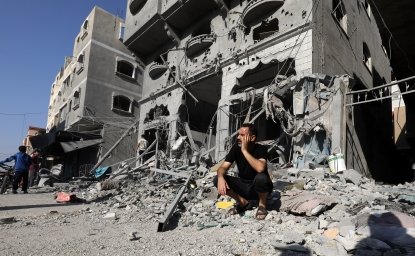
Israel Expands Operations on Multiple Fronts: Perspectives on the Conflict
